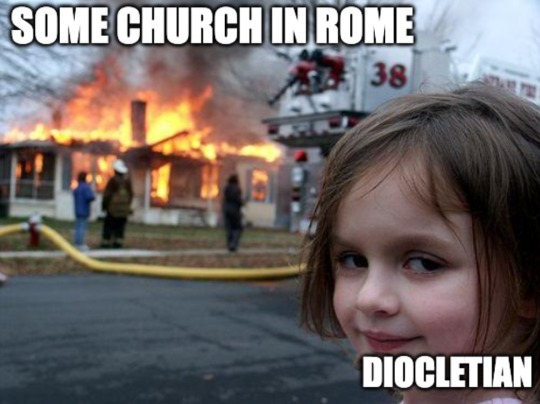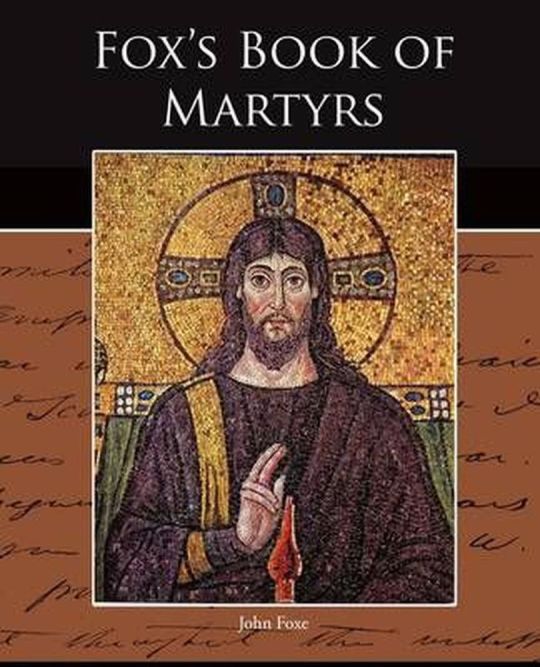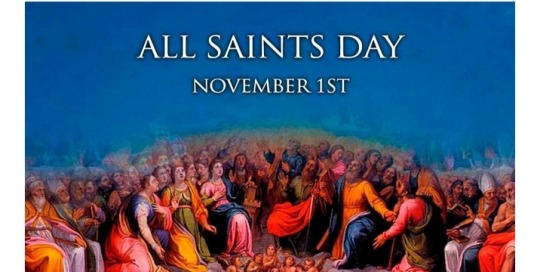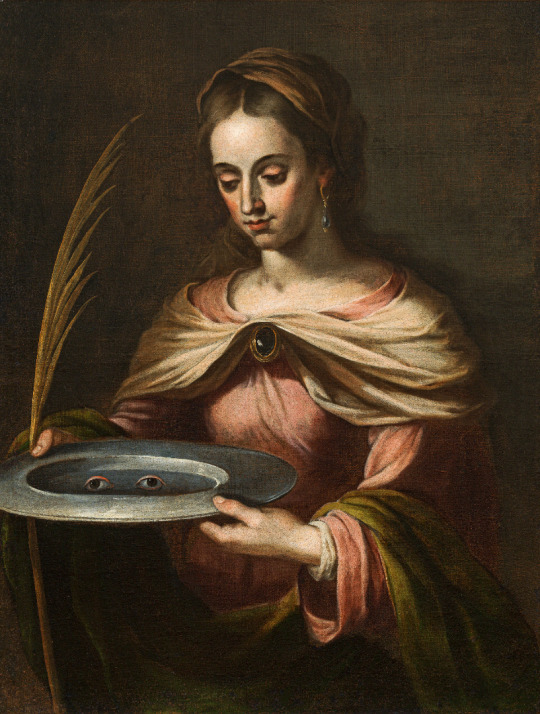#Diocletianic Persecution
Text
sv. Vít
… podle tradice syn zámožného pohana ze Sicílie, jenž byl tajně svým vychovatelem a kojnou veden ke křesťanské víře, kvůli níž byl pronásledován; kolem roku 304 zemřel coby sedmnáctiletý chlapec mučednickou smrtí v Římě na příkaz císaře Diokleciána, vládnoucího v letech 284-305 …
~
St. Vitus
… according to tradition, the son of a wealthy pagan from Sicily, who was secretly led by his tutor and nurse to the Christian faith, for which he was persecuted; around the year 304 he died as a seventeen-year-old boy by martyrdom in Rome on the orders of the emperor Diocletian, who ruled in the years 284-305…
Bohové dávných Slovanů ~ Gods of ancient Slavs (Martin Pitro, Petr Vokáč)
Somehow the fact the people, whose education and upbringing doomed him, are not even his FAMILY makes it much, much worse.
You're given the responsibility over other person's child and you decide to impose your own religion on them, knowing well enough they're likely to be persecuted for it?
The Diocletianic or Great Persecution was the last and most severe persecution of Christians in the Roman Empire.
I understand choosing your own faith, as an adult, but using your influence over a child of parents with other believes? To instil in them something that's likely to get them killed...
Different times perhaps, but I'm still disgusted.
#legends#St. Vitus#Christianity#Christian saints#martyrs#Diocletian#Diocletianic Persecution#Bohové dávných Slovanů#Martin Pitro#Petr Vokáč#V#books#quotes
7 notes
·
View notes
Text
YOUR meaningless deaths. OUR holy martyrdom
#driftwood variety#maybe i shoudl specify this is explicitly for the#diocletian persecution of the christians#and also#tertullian
2 notes
·
View notes
Text
ON THIS DAY, 303 AD
FIRST EDICT for PERSECUTION of CHRISTIANS issued at NICOMEDIA by EMPEROR DIOCLETIAN







#history#ancient history#classics#ancient rome#roman#memes#meme#jesus christ#christianity#persecution#diocletian
2 notes
·
View notes
Text

doesnt sound like the kind of thing elvira would say at all
#joak#fwiw the council was convened during the diocletian persecutions hence the strictness of its rulings
0 notes
Text
أثر أزمة القرن الثالث الميلادي على فلسطين - دراسة تاريخيَّة وأثريَّة
أثر أزمة القرن الثالث الميلادي على فلسطين – دراسة تاريخيَّة وأثريَّة
أثر أزمة القرن الثالث الميلادي على فلسطين – دراسة تاريخيَّة وأثريَّة
الكاتب : دكتور لؤي محمد أبو السعود . دكتور أمجد أبو العز
الملخص:
تهدف هذه الدراسة إلى التعرف إلى أزمة القرن الثالث الميلادي في روما وأثرها على فلسطين من جميع جوانب الحياة المختلفة مُنذ اغتيال الإمبراطور الروماني ألكسندر سيفيروس (Alexander Severus)عام 235م حتى…

View On WordPress
#Crisis of the Third Century#Diocletian#Palestine#Palmyra. Persecution of Christians#Romans#فلسطين.#أزمة القرن الثالث الميلادي#الإضطهاد المسيحي#الرومان.#تدمر#ديوقلتيان
0 notes
Text
Fox's Book of Martyrs
https://www.biblestudytools.com/history/foxs-book-of-martyrs/
Edited by William Byron Forbush This is a book that will never die — one of the great English classics. . . . Reprinted here in its most complete form, it brings to life the days when “a noble army, men and boys, the matron and the maid,” “climbed the steep ascent of heaven, ‘mid peril, toil, and pain.” “After the Bible itself, no…

View On WordPress
0 notes
Note
So I was on the wikipedia page for the Diocletianic Persecution and it gave the vibes of having been written by one of those Christians who are kinda fixated on exaggerating the Roman persecutions of Christians to fuel their victim complex. It's very possible that I am imagining it, as I have no idea whether any of the facts in the page were actually incorrect, because I don't know jack shit about the Diocletianic Persecution, which is why I was on the wikipedia page for it. But the tone was weird and the vibes were off.
Normally I would resolve this by parallel reading but I am very sick rn and can't be assed to go to the library so I figured I would ask your opinion. This seems like something you might know about.
I'm gonna be oversimplifying, but the Romans were just brutal. You gotta remember that this was a particularly unstable period in Roman history and Christians at the time we're often radically politically opposed to the desires of the state.
I've got the wikipedia open in the other window right now. I would say this article has the vibe of several Christian scholars engaging in the proud academic tradition of getting into petty slapfights about their favorite hairs to split.
260 notes
·
View notes
Text

Saint Dorothy
Died 311
Feast Day: February 6
Patronage: horticulture; brewers; brides; florists; gardeners; midwives; newlyweds; love
Saint Dorothy lived in Caesarea (Turkey) during the Diocletian persecution of Christians. Legend has it, that she was ordered to sacrifice to the pagan gods and refused. On the way to her execution, a young lawyer, Theophilus, mockingly asked her for “fruits and flowers from the garden” in which she proclaimed was in heaven. A basket of fruit and flowers was delivered to her by an angel that she gave to young Theophilus, who then converted and was also martyred. That’s why she’s the patron saint of florists.
Prints, plaques & holy cards available for purchase here: (website)
65 notes
·
View notes
Text

Gold medallion of the Roman emperor Diocletian (r. 284-305 CE). Ascending the throne after some fifty years of instability in the Roman Empire, Diocletian successfully restored order, dividing the Empire into eastern and western portions, each of which was ruled by a senior (Augustus) and junior (Caesar) emperor. He also earned infamy for his aggressive persecution of Christians, motivated by his belief that the traditional Roman gods were angry at the spread of "novel" religions. In 305, he became the first emperor to abdicate of his own accord, retiring to his palace at Split in present-day Croatia. Here Diocletian is depicted with a laurel crown and military cuirass, holding a globe surmounted by Victory in his right hand. Photo credit: Classical Numismatic Group, Inc. http://www.cngcoins.com
#classics#tagamemnon#Ancient Rome#Roman Empire#ancient history#late antiquity#Late Roman Empire#Diocletian#Roman history#art#art history#ancient art#Roman art#Ancient Roman art#Roman Imperial art#late antique art#medallion#metalwork#gold#goldwork#numismatics#ancient numismatics
157 notes
·
View notes
Text

The Solemnity of All Saints is celebrated on the first of November.
It was instituted to honour all of the saints, both known and unknown, and, according to Pope Urban IV, to supply any deficiencies in the faithful's celebration of saints' feasts during the year.
In the early days of the Church, the Christians were accustomed to solemnize the anniversary of a martyr's death for Christ at the place of martyrdom.
In the fourth century, neighbouring dioceses began to interchange feasts, to transfer relics, to divide them, and to join in a common feast; as is shown by the invitation of Saint Basil of Caesarea (397) to the bishops of the province of Pontus.
Frequently, groups of martyrs suffered on the same day, which naturally led to a joint commemoration.
In the persecution of Diocletian, the number of martyrs became so great that a separate day could not be assigned to each, but the Church, feeling that every martyr should be venerated, appointed a common day for all.
The first trace of this we find is in Antioch on the Sunday after Pentecost.
We also find mention of a common day in a sermon of Saint Ephrem the Syrian (373) and in the 74th homily of Saint John Chrysostom (407).
At first, only martyrs and Saint John the Baptist were honoured by a special day in the Liturgical Calendar.
Other saints were added gradually and increased in number when a regular process of canonization was established.
Still, as early as 411, there is in the Chaldean Calendar a "Commemoratio Confessorum" for the Friday after Easter.
In the west, Pope Boniface IV, on 13 May 609 or 610, consecrated the Pantheon in Rome to the Blessed Virgin and all the martyrs, ordering an anniversary.
Gregory III (731-741) consecrated a chapel in the Basilica of Saint Peter to all the saints and fixed the anniversary for November 1.
A basilica of the Apostles already existed in Rome. Its dedication was annually remembered on May 1.
Gregory IV (827-844) extended the celebration on November 1 to the entire Church.
The vigil seems to have been held as early as the feast itself. The octave was added by Sixtus IV (1471-84).
Francis Merseman (Catholic Encyclopedia), copyright 1907.
13 notes
·
View notes
Text
✨ 𝗦𝘁𝘀. 𝗖𝗼𝘀𝗺𝗮𝘀 𝗮𝗻𝗱 𝗗𝗮𝗺𝗶𝗮𝗻: 𝗕𝗿𝗶𝗻𝗴𝗲𝗿𝘀 𝗼𝗳 𝗛𝗼𝗽𝗲 ✨
. . 𝗙𝗲𝗮𝘀𝘁 𝗗𝗮𝘆 𝗦𝗲𝗽𝘁𝗲𝗺𝗯𝗲𝗿 𝟮𝟲𝘁𝗵
🌹 Born in the 3rd century in Cilicia, a region in present-day southeastern Turkey, Sts. Cosmas and Damian were twin brothers who were distinguished by their profound knowledge and dedicated Christian faith. Known as the "silverless" or "moneyless" ones, they were physicians who provided their healing services without charge, emphasizing their empathetic and altruistic nature. 🌹
📿 While offering hope and medical comfort, they also disseminated the principles of the Christian faith, leading many towards Christianity. They are often represented as the epitome of holistic healing, restoring both spirit and body. 📿
💒 The brothers encountered hostility due to their Christian beliefs and are believed to have been martyred in the late 3rd century during the times of Diocletian persecution. Their steadfast faith and their commitment to alleviating the pain of others have elevated them to revered positions in Christian lore. 💒
🙏 Their feast day, recognized on September 26th, is a poignant reminder of the essence of altruistic service and the restorative nature of faith. May Sts. Cosmas and Damian’s exemplary lives motivate us to intertwine our faith with our daily endeavors, dedicating our abilities and services to enhance the lives of May Sts. Cosmas and Damian’s exemplary lives motivate us to intertwine our faith with our daily endeavors, dedicating our abilities and services to enhance the lives of others and to honor God. 🌟 others and to honor God. 🌟
𝗔𝗿𝘁𝗶𝘀𝘁 𝗼𝗳 𝗶𝗺𝗮𝗴𝗲: @timeinprayer

#jesus#catholic#my remnant army#jesus christ#virgin mary#faithoverfear#saints#jesusisgod#endtimes#artwork#Jesus is coming#pray for us
14 notes
·
View notes
Text

What did Roman Empire pagan soldiers think of fighting under Constantine and Christianity?
Probably not very much.
The Roman military was a world of its own. More than today, soldiers had their very identity shaped by the institution and people they served. Upon enlisting, they swore allegiance to the emperor and received new names as his servants — Valerius during the tetrarchy and Flavius under Constantine. Those who didn’t speak Latin were pushed to acquire a basic grasp of it, pretty much like the French Foreign Legion of today. Starting from the late republican period, Roman soldiers were accustomed to receiving salaries, booty and pensions from their commanders, not the state in an abstract sense. Under the empire, loyalty often lay with the emperor, as long as he was perceived as strong.
In that frame, Constantine never lost the faith of his men thanks to his talents, accomplishments and image. It surely helped that he was Constantius Chlorus’ son, but dynastic feelings were not so strong in the 4th c. What really mattered was that he was a victorious imperator, with plenty of experience both before and after his ascension. His CV included wars against, and victories over, foreigners (Franks, Goths, Alamanni) and rival emperors (Maxentius, Licinius) alike. That kept soldiers satisfied and himself secure on the throne. Besides, Constantine took care to associate his military exploits with the Christian God. On the contrary, his sons failed to live up to his legacy and had to face claims by men like Magnus Magnentius and Julian.

Another thing to consider is the role of religion in the then Roman military. In general, early Christianity wasn’t unanimously for or against military service, hence a decent minority of soliders were Christians even before Constantine. In the late 3rd c., you could find Christians like St. Marcellus holding even the rank of centurion. The statesman Cassius Dio is reported to have spoken of Christians in the comitatus of all four original tetrarchs. Cases of individual disobedience cannot be excluded, of course, but the military was, above all, a state mechanism. Under Diocletian, they persecuted Christians; under Constantine, they fought the Donatists and may have even destroyed the Asclepieion at Aegae, Cilicia.

On his part, Constantine didn’t adopt Christianity the way most people after his time imagine(d). There was a long, gradual process, for the most part inscribed into the norms of late antiquity. Nomenclature and visual language were preserved to a considerable extent. Separate Christian and non-Christian prayers are reported to have been taking place at the same time. At some point in the 320s, a group of veterans greeted Constantine with the traditional “May the gods preserve you for us” salute. Two elite army units, Diocletian’s Jovians and Maximian’s Herculians, were not rebranded, although their names recalled the gods Jupiter and Hercules whom the late tetrarchs associated themselves with.
With the benefit of hindsight, we now know that the dynamics of that complex situation ended up favouring Christianity — if anything, all of Constantine’s successors were Christians except for Julian. That, however, should not be taken out of context. Few have a panoramic view of their time or the acumen to predict the future, and the provincials who made up the bulk of the late Roman military were not among them. Even if they were, though, they may not have had particularly strong feelings about any potential outcome. At the same time, various (quasi-)henotheistic traditions like the cult of Sol Invictus and Mithraism were around. The period was transitional, hence quite fluid.

#kemetic dreams#european#europeans#western europe#christianity#roman military#henotheistic traditions#cult of sol invictus#mithraism#christians#constantine
8 notes
·
View notes
Text

THE DESCRIPTION OF SAINT LUCY OF SYRACUSE
The Patron of the Blind and Throat Infections
Feast Day: December 13
"Those whose hearts are pure are temples of the Holy Spirit."
Lucy, or Lucy of Syracuse was born of a noble family in Syracuse in the year 283 AD, and believe it or not, she is one of the best known virgin martyrs, along with Agatha of Sicily, Agnes of Rome, Cecilia of Rome and Catherine of Alexandria. Her father was of Roman origin, but died when Lucy was five years old, leaving her and her mother without a protective guardian. Her mother's name, Eutychia seems to indicate that she came from a Greek background. Lucy's name can branch from two words: 'lux' (Latin) meaning 'light,' and 'lucid' (English) which means 'clear,' 'vivid' and 'intelligible.'
At an early age, she secretly consecrated her virginity to the Lord, and she hoped to distribute her dowry to the poor. However, Eutychia, not knowing of Lucy's promise, and suffering from a bleeding disorder, feared for Lucy's future. Agatha had been martyred 52 years before during the Decian persecution. Her shrine at Catania, less than 50 miles from Syracuse, attracted a number of pilgrims; many miracles were reported to have happened through her intercession. Eutychia was persuaded to make a pilgrimage to Catania, in hopes of a cure. While there, Agatha came to Lucy in a dream and told her that because of her faith her mother would be cured and that Lucy would be the glory of Syracuse, as she was of Catania. With her mother cured, Lucy took the opportunity to persuade her mother to allow her to distribute a great part of her riches among the poor.
Eutychia suggested that the sums would make a good bequest, but Lucy countered these words: '…whatever you give away at death for the Lord's sake you give because you cannot take it with you. Give now to the true Savior, while you are healthy, whatever you intended to give away at your death.'
News that the patrimony and jewels were being distributed came to Lucy's betrothed, who denounced her to Paschasius, the Governor of Syracuse. Paschasius ordered her to burn a sacrifice to the emperor's image. When she refused, Paschasius sentenced her to be defiled in a brothel.
It was the year 304 AD, during the Diocletianic Persecution. Christian tradition states that when the guards came to take her away, they could not move her even when they hitched her to a team of oxen. Bundles of wood were then heaped about her and set on fire, but would not burn. And finally, Lucy met her death by the sword thrust into her throat.
According to later accounts, before she died she foretold the punishment of Paschasius and the speedy end of the persecution, adding that Diocletian would reign no more, and Maximian would meet his end. This so angered Paschasius that he ordered the guards to remove her eyes. Another version has Lucy taking her own eyes out in order to discourage a persistent suitor who admired them. When her body was prepared for burial in the family mausoleum it was discovered that her eyes had been miraculously restored. This is the reason that Lucy of Syracuse is the patron saint of those with eye-related diseases.
Her major shrine can be found in San Geremia in Venice. Her traditional feast day, known in Europe as Saint Lucy's Day, is observed by Western Christians, and she was honored in the Middle Ages and remained a well-known saint in early modern England.
This is particularly seen in Scandinavian countries, with their long dark winters. There, a young girl dressed in a white dress and a red sash (as the symbol of martyrdom) carries palms and wears a crown or wreath of candles on her head. In Denmark, Norway, Sweden, and parts of Finland, girls dressed as Lucy carry St. Lucia buns in procession as songs are sung. It is said that to vividly celebrate St. Lucy's Day will help one live the long winter days with enough light.
Villagers from Barangay Sta. Lucia in Magarao, Camarines Sur, hold a novena to St. Lucy nine days before her feast. A procession of the saint's image is held every morning at the poblacion or village centre during the nine days leading up to St. Lucy's Day, attracting devotees from other parts of the Bicol Region. Hymns to the saint, known as the Gozos, as well as the Spanish version of the Ave Maria are chanted during the dawn procession, which is followed by a Mass.
#random stuff#catholic#catholic saints#saint lucy#santa lucia#lucy of syracuse#lucia de siracusa#eye infections#blind#throat infections
9 notes
·
View notes
Text

Happy Lucia 🌟
Saint Lucy's Day, also called the Feast of Saint Lucy, is a Christian feast day observed on 13 December. The observance commemorates Lucia of Syracuse, an early-fourth-century virgin martyr under the Diocletianic Persecution.[1] According to legend, she brought food and aid to Christians hiding in the Roman catacombs, wearing a candle lit wreath on her head to light her way, leaving both hands free to carry as much food as possible.[2][3] Because her name means "light" and her feast day had at one time coincided with the shortest day of the year prior to calendar reforms, it is now widely celebrated as a festival of light.[4][5] Falling within the Advent season, Saint Lucy's Day is viewed as a precursor of Christmastide, pointing to the arrival of the Light of Christ in the calendar on December 25th, Christmas Day.[1][6]
Saint Lucy's Day is celebrated most widely in Scandinavia, Italy and the island nation of Saint Lucia, each emphasising a different aspect of her story.[2] In Scandinavia, where Lucy is called Santa/Sankta Lucia, she is represented as a woman in a white dress symbolizing a baptismal robe and a red sash symbolizing the blood of her martyrdom, with a crown or wreath of candles on her head.[7]
In Norway, Denmark, Sweden and Swedish-speaking regions of Finland, as songs are sung, girls dressed as Saint Lucy carry cookies and saffron buns in procession, which symbolizes bringing the Light of Christ into the world's darkness.[7][8] In both Catholic and Protestant churches, boys participate in the procession as well, playing different roles associated with Christmastide, such as that of Saint Stephen or generic gingerbread men, Santa Clauses, or nisses. The celebration of Saint Lucy's Day is said to help one live the winter days with enough light.[7]
A special devotion to Saint Lucy is practised in the Italian regions of Lombardy, Emilia-Romagna, Veneto, Friuli Venezia Giulia, Trentino-Alto Adige, in the north of the country, and Sicily, in the south, as well as in the Croatian coastal region of Dalmatia. In Hungary and Croatia, a popular tradition on Saint Lucy's Day involves planting wheat grains that grow to be several centimetres tall by Christmas Day, representing the Nativity of Jesus.[6
Source: Wikipedia
7 notes
·
View notes
Text


Hehehehe San Marino my beloved 🇸🇲
Decided to revisit her character and put more depth into her personality! :)
Republic of San Marino // Repubblica di San Marino
Natalina Stefanelli • she/her • September 3, 301 AD • 1,722 years old (19 human years)
Founded by Marinus of Rab, a Christain stonemason, who fled from the Roman Empire in an attempt to evade religious persecution by Emperor Diocletian. She’s an enclave microstate located in North-central Italy atop Mount Titano, the closest Italian city being Rimini, which is also the only access point by bus. The capital of San Marino is the City of San Marino. San Marino is the 5th smallest country in the world.
Although her boarders are open to anyone with a valid visa for Italy without any necessary boarder checks needed, she’s a fairly closed off person— well, she opens up a little bit with her family or selected friends around. But she prefers her own company over others the most. She’s very fond of old fashioned aesthetics and likes to keep things fairly the same. San Marino doesn’t get out often, but when she does it’s usually by force of Vatican City trying to make her socialize with someone other than her favorite barista, her next door neighbor, and mailman. She’s very welcoming to tourists and will interact with them when she feels like it. Veneziano visits her more than forces her out of the house. Sometimes he paints the pottery she makes. Romano and Seborga don’t visit much, they mainly interact during the family dinners Vatican City forces San Marino to come to once a year.
When she does open up, she’s a kind and inviting person who tends to talk a lot about the historical aspects of her home. She’s more than happy to bake you a special treat known as Torta Tre Monti— Cake of the Three Moutains/Towers. She prides herself on being the oldest sovereign state.
Being an enclave has made San Marino so used to limited space that she prefers it to having a big space. But it is nice to get out and go to the beach every once in awhile, by her choice of course. The Rimini beaches are her favorite to visit because it’s the closet.
She has three moles which represent the three towers of Mount Titano; the first mole by her mouth is the Cesta, the highest tower on the summit. The bigger mole on her neck is the Guaita, the oldest and most famous of the three. Lastly is the Montale, the smallest tower. The single stray curl in her straightened hair is a reference to her relation with the Roman Empire.
Hobbies
Pottery making
People watching
Stamp collecting
Little note :)
I focused more on the fact that she’s land locked by Italy and translated that in her being an ambivert— she prefers having time to herself, but she’s willing to spend time with others— sparingly that is. I dunno. I just thought it’d be a nice contrast to Veneziano, Romano, and Seborga’s personalities! She’s the one with the untreated social anxiety in the family :) /j but fr, I just thought having another bubbly freak or a grumpy boo would be way too overwhelming and would cause the characters to clash so I kind of settled in between that— depression! :DDD /j also I kind of wrote her with having the role of aunt for the Italy brothers. I remember debating on making her the big sister or aunt and landed on aunt for specific reasons I barely remember lol. But I really liked the idea so I ran with it. She and Vatican City are brother and sister. I wanted to add quite a bit of historical facts in this little character profile thing to kind of explain how she reacted in those situations but it’d be way too long if I did that lmao. But with what I did add, please feel free to correct me if it is wrong. I don’t care, just let loose and correct, fuck me up if you have to lmao. Also it was her birthday yesterday, September 3rd! Wish her a belated birthday :)
#I’ll probably post more about her character and such thru art#idk#I kind of wanna work on Vatican City now so lol no more typing info out#hetalia#hetalia oc#hetalia san marino#oc: san marino#what a wild oc tag to have without context#at least its not clone high oc tag ✊(he says as he has clone high ocs)
12 notes
·
View notes
Text
Fox's Book of Martyrs
https://www.biblestudytools.com/history/foxs-book-of-martyrs/
Edited by William Byron Forbush This is a book that will never die — one of the great English classics. . . . Reprinted here in its most complete form, it brings to life the days when “a noble army, men and boys, the matron and the maid,” “climbed the steep ascent of heaven, ‘mid peril, toil, and pain.” “After the Bible itself, no…

View On WordPress
0 notes